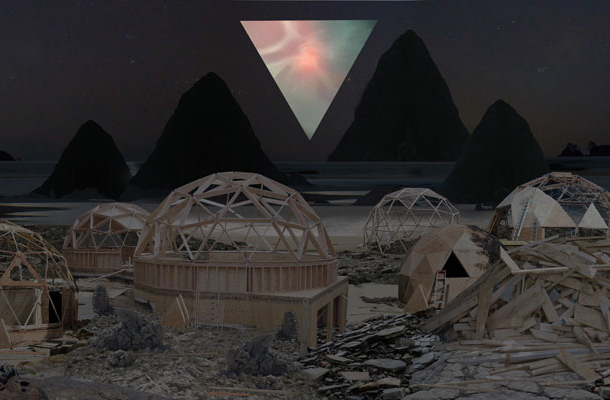
A triangle of shimmering colour hovers above the horizon, a beacon of light in the night sky, its elegant form gently illuminating the remote shores below. Though there are no inhabitants to be seen, clusters of half-built geodesic domes evidence a prior human presence. In various states of construction and dilapidation, it is unclear whether these dwellings await imminent completion, or, more ominously, they have been abandoned completely.
Jess Littlewood’s photo collages present a series of visions that are at once otherworldly and familiar, eerie yet alluring. These dark, imagined landscapes, littered with their ambiguous structures, seem to perfectly encapsulate the current atmosphere of hope and disquiet, of the desire for a better future amidst the decay of recent ideologies.
The triangular figure that hangs in the night sky in each of these images, a digital cutout of the aurora borealis, is echoed in the equilateral segments of the domed architecture beneath. As a kind of occult ritualistic symbol, the triangle motif here seems to signify the return to a faith in the more primitive geometries of a bygone Euclidean age; one in which truth and beauty appeared one and the same, linear and attainable, yet mystical in their absoluteness. Littlewood’s imagery speaks of the collective will for clarity, unity and direction that now pervades. Yet this is a desire born of the deliberate, informed naivety of a generation no less versed in the realities of quantum uncertainty and a nature now forever beyond our grasp. Here, the pyramid of the Eye of Providence is upturned, inverted, its all-seeing eye godless and perpetually unformed.
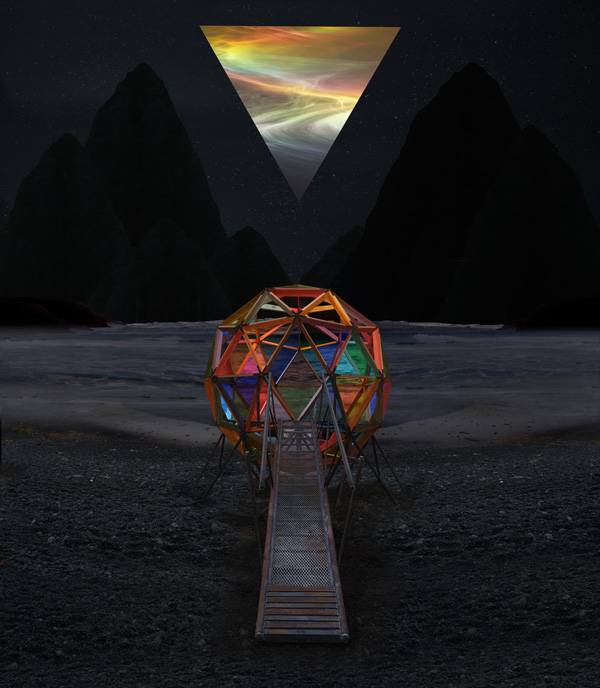
Exhibited under the title Future Plans, Littlewood’s series brings to mind the failings of countless grand visions, of both socialist and capitalist design. The geodesic dome is particularly emblematic of utopianism and its demise. From the rusting remains of the once-gleaming World’s Fairs of the mid-20th century, to the structure’s most famous iteration, Florida’s EPCOT Centre, with its ultimate Disneyfication leading the notion of utopianism itself towards a state of terminal Baudrillardian vacuity.
Further casting its shadow here is the Drop City artists’ commune that sprung up in Colorado in the 1960s. The template for geodesic dome habitation, its site has long since been vacated, the hippy dream of communal living and free love having inevitably turned sour. As it transpires, we are simply not idealistic enough animals to see it through.
The half-built houses in Littlewood’s world also serve as a reminder of more recent global events at the other end of the ideological spectrum; of the row upon row of unfinished Spanish holiday homes, whose architects and investors evaporated as suddenly as the flow of cheap credit on which they once thrived. The unregulated Darwinian capitalism that led the world’s economies to the brink of collapse proved that neither ideological extreme could be wholly sustainable. Lest we forget, extinction is the rule and not the exception, leaving pragmatism and adaptation to prevail.
Yet, that is not to say the middle of the road is the best place to be. On the contrary, ours is a generation inclined to strive towards our own divergent, individual goals, whilst the discoveries and rewards of our efforts may be shared across an ever more hyperconnected, open source culture, thus enabling collective progress. There is a growing realisation, reflected in these works, that we can in fact be fantasists and realists at the same time, since the drive towards enlightenment is both futile and essential.
The source of Littlewood’s raw material is Google Images, that almost inexhaustible repository of photographs ripe for appropriation. The use of a search engine here inevitably introduces a degree of chance and serendipity to proceedings, in part dictating the forms the artist’s assemblages might take. The very act of trawling through endless web images can itself become a Sisyphean task of sorts, as one searches for the fulfilment of some unknown end — a phenomenon marvellously articulated in David Raymond Conroy’s recent video piece, Hauling/It is not the past, but the future, that determines the present (2011).
Many of the constructions in Littlewood’s universe appear like pods of beached whales, washed up on the shore, helpless and immobile. Despite this, titles such as Trying Hard and Working Through The Night indicate a sense of optimism and a determination to succeed regardless. It is perhaps telling that, of all the buildings, the ones that most outwardly display signs of life, glowing invitingly, are those that sit alone, isolated from any grouping. Here, perhaps, we are free to imagine our own individual paradise, a personal utopian fantasy. Whilst the northern lights above may not guide us to the promised shores, the trajectories of failed utopias retain the capacity to inspire, and to enrich our continued pursuit of unreachable horizons.
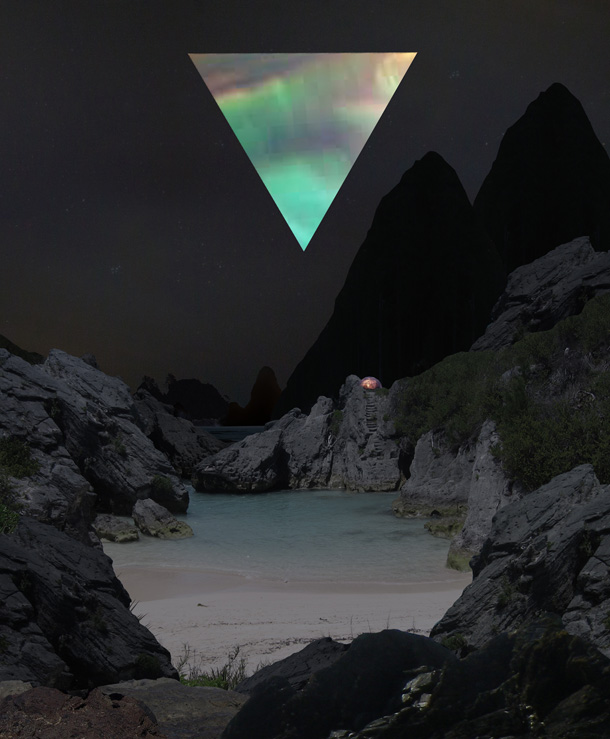
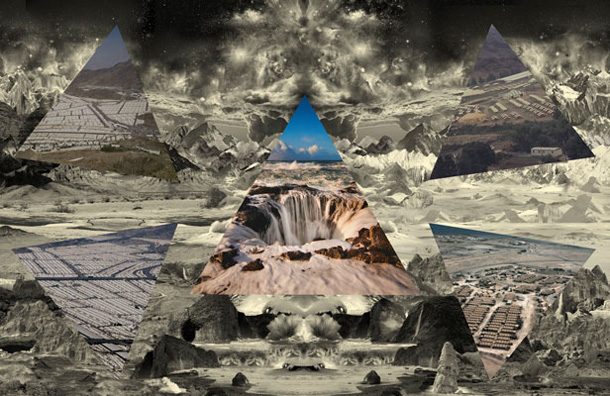
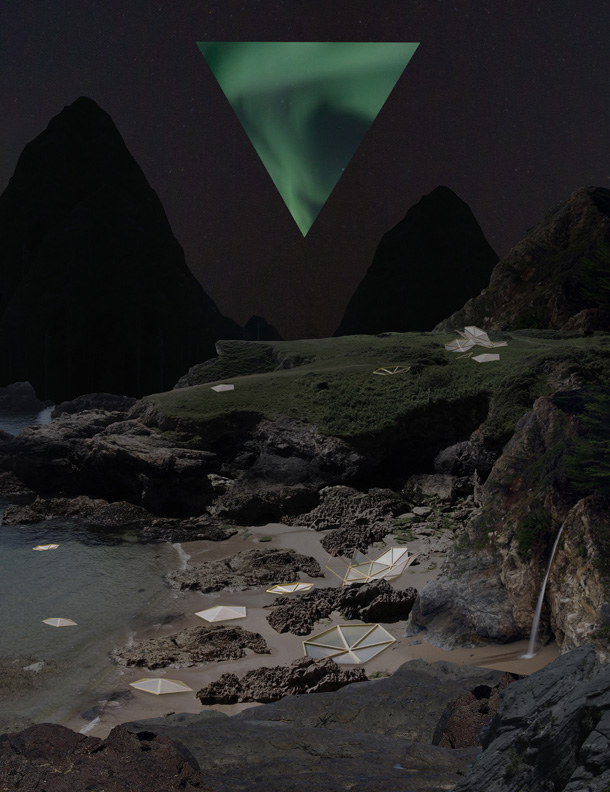
Images (from top): Commune (detail), Temple, The Watch, The End of Now, Failure.
All artworks © 2012 Jess Littlewood, courtesy of The Contemporary London

Pingback: Warren Ellis » Bookmarks for 2012-11-15